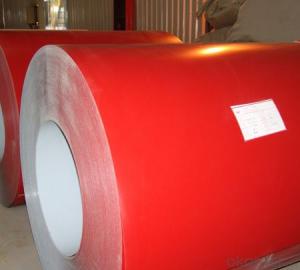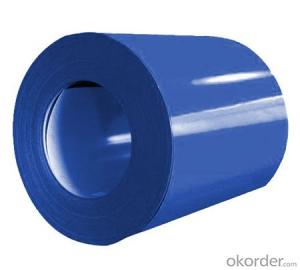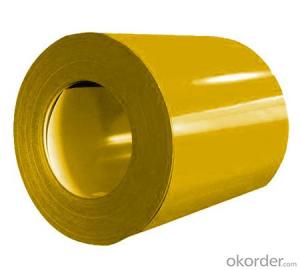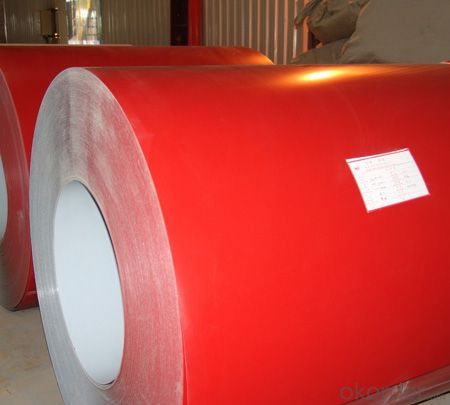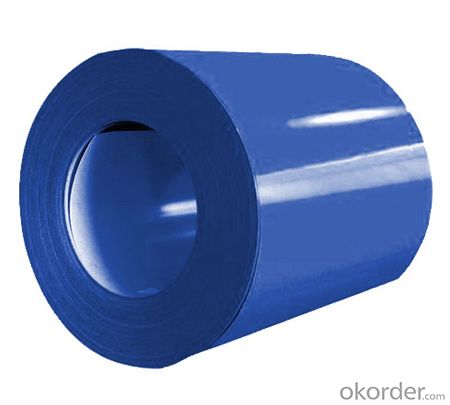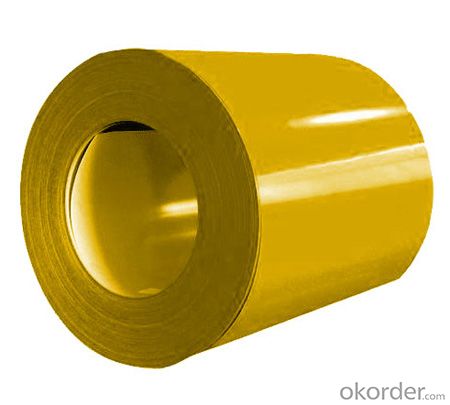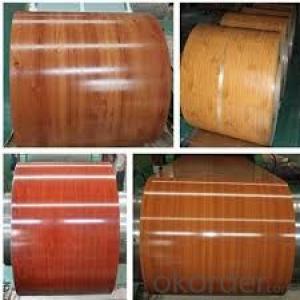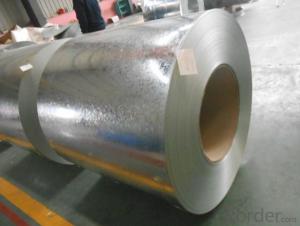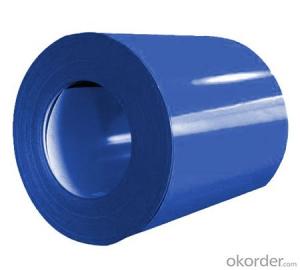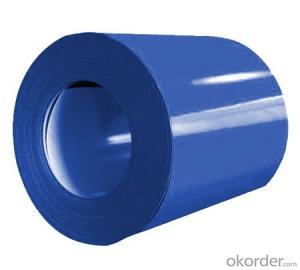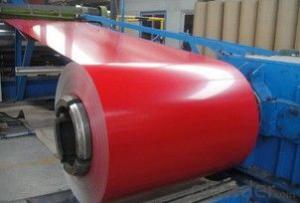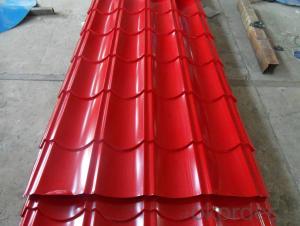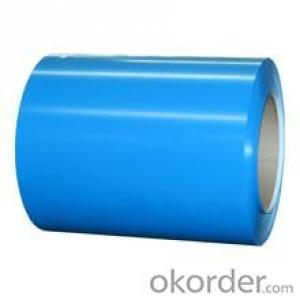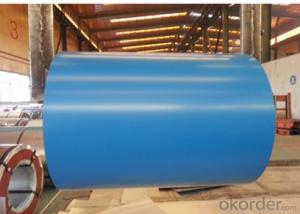Pre-painted Galvanized Steel Coil-EN 10169 DX51D+Z--Good Quality
- Loading Port:
- China main port
- Payment Terms:
- TT OR LC
- Min Order Qty:
- 25 m.t.
- Supply Capability:
- 15000 m.t./month
OKorder Service Pledge
OKorder Financial Service
You Might Also Like
1. Pre-painted Galvanized Steel Coil-EN 10169 DX51D+Z--Good Quality
Description of Pre-painted Galvanized Steel Coil-EN 10169 DX51D+Z--Good Quality
With GI as base material, after pretreatment (degrease and chemical treatment ) and liquid dope with several layers of color, then after firing and cooling, finally the plate steel is called pre-painted galvanized (aluzinc) steel.
2.Main Features of the Pre-Painted Galvanized/Aluzinc Steel Coil:
• Excellent process capability
• Workability, durability
• Excellent heat resistance performance
• High strength
3.Pre-Painted Galvanized/Aluzinc Steel Coil Images
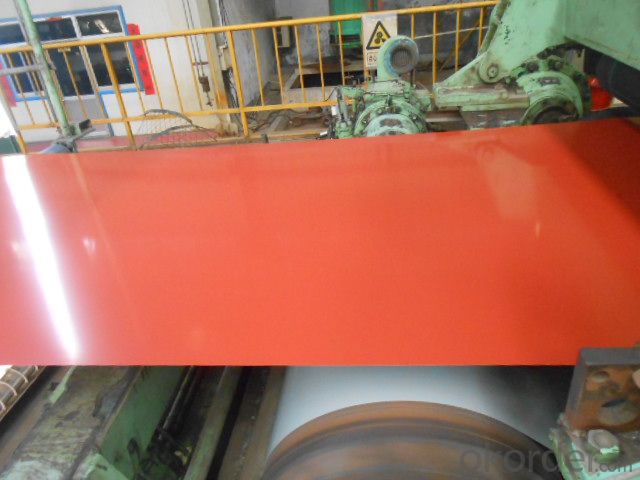
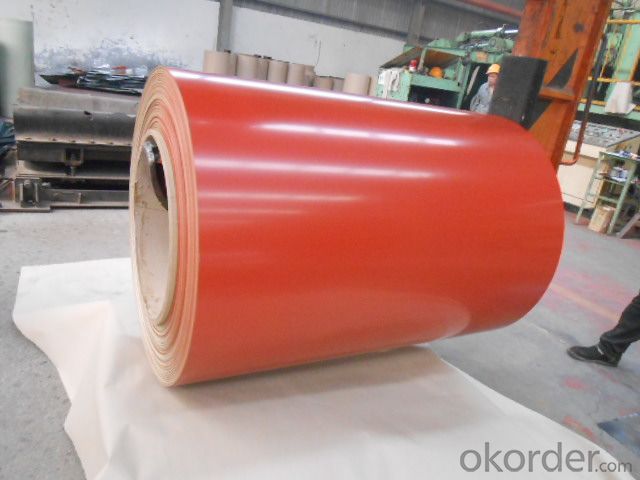
4.Pre-Painted Galvanized/Aluzinc Steel Coil Specification
Standard: AISI, ASTM, BS, DIN, GB, JIS
Grade: DX51D, DX52D
Thickness: 0.17-2.0mm
Brand Name: KMRLON
Application: Boiler Plate
Special Use: High-strength Steel Plate
Width: 20-1250mm
commoidty: pre-painted galvanized steel coil
Thickness: 0.13-4.0mm
width: 20-1250mm
zinc coating: 40-180g/m2
printing thickness: top side: 20+/-5 microns, back side: 5-7 microns
color: all RAL color
coil weight: 4-7 tons
packaging: standard seaworthy packing
5.FAQ of Pre-Painted Galvanized/Aluzinc Steel Coil
1. What’s the application of this product?
Roof, roof structure, surface sheet of balcony, frame of window, etc.
2. What’s the brand of the paint?
We use the best brand of all of the word—AKZO.
3. How long can we receive the product after purchase?
Usually within thirty working days after receiving buyer’s advance payment or LC. We will arrange the factory manufacturing as soon as possible. The cargo readiness usually takes 15-25 days, but the shipment will depend on the vessel situation.
- Q: How are steel coils priced in the market?
- Steel coils are typically priced in the market based on factors such as the current demand and supply dynamics, the quality and grade of the steel, the production and transportation costs, and any additional charges or taxes. The pricing can also be influenced by global economic trends, trade policies, and currency fluctuations.
- Q: What is the average surface finish tolerance for steel coils?
- The average surface finish tolerance for steel coils typically ranges from 0.5 to 1.5 micrometers.
- Q: Can steel coils be used in the production of medical equipment?
- Yes, steel coils can be used in the production of medical equipment. Steel is a strong and durable material that can provide structural support and stability to various medical devices and equipment. It is commonly used in the manufacturing of instruments, surgical tools, and machinery used in medical settings.
- Q: I am buying my boyfriend a steel guitar for our one year anniversary and I was curious what brand or company I should look into. I want something high quality yet traditional. Money is not really an issue but I don't exactly want to spend an arm and a leg either.Thank you in advance!
- Did Steel Guitar stand for guitar string ? If yes, there's many brand provide quality guitar string and also be famous brand. you can buy such as D'addario, Errnie ball, GHS, Blue Steel. One more tips, for standard string gauge, if you want to surprise your boyfriend, buy .9 or .10 gauge set. This string set suitable for standard guitar, He'll be more happy if you give him 1 pack of string, buy if it over your price range, just 1 set is ok, haha. Happy Anniversary, Es. ;)
- Q: What is galvanized steel coil?
- Galvanized steel coil, a type of steel, receives a layer of zinc coating to safeguard it against corrosion. The galvanization process entails immersing the steel coil in molten zinc, creating a protective layer on its surface. This layer not only prevents corrosion but also acts as a shield against scratches and other forms of damage. Due to its durability and rust resistance, galvanized steel coil finds widespread usage in industries such as construction, automotive, and manufacturing. It is commonly employed in the production of roofing materials, pipes, and automotive components, among other applications. In summary, galvanized steel coil offers a versatile and cost-effective solution for preserving the longevity and integrity of steel products.
- Q: Can steel coils be coated with fluorescent materials?
- Yes, steel coils can be coated with fluorescent materials.
- Q: I'v had 5 people at school say steel is stonger than Titanium and some(5) kids at school say titanium stronger then steel but i looked it up on the internet and i got soem web sites that say steel is stronger then titanium and some sites that say titanium is stonger then steel sooooo???? witch one is strongerPS i no tungsten is stronger then steel.... and titanium.................
- Titanium has better high temperature strength than steel. Titanium doesn't resist shocks like steel can. It's more brittle. It's also far more difficult to weld. Titanium must be welded in an oxygenless environment. The average strength of steels that are made is under that of titanium. However, the strongest steel is stronger than the strongest titanium. Steel is the only viable building material. Titanium is too rare, expensive, and hard to handle for structures of great height. Hope this helps. Peace and Love.
- Q: Which type is better and give reasons why... I making a team of either Dark or Steel :D Thankyou
- i would choose dark because it has alot more speed and power steel focuses more on defense a good team would be something like Umbreon Honchcrow Shiftry Spiritomb mightyena Sharpedo
- Q: What are the common storage defects in steel coils?
- Common storage defects in steel coils include corrosion, rusting, surface damage (such as scratches or dents), coil slippage or misalignment, coil edge damage, and moisture or water damage. These defects can occur due to improper storage conditions, handling, or exposure to environmental factors. Regular inspection and proper storage practices are essential to prevent these defects and maintain the quality of steel coils.
- Q: What are the common welding defects in steel coils?
- Some common welding defects in steel coils include lack of fusion, porosity, undercutting, and weld spatter.
Send your message to us
Pre-painted Galvanized Steel Coil-EN 10169 DX51D+Z--Good Quality
- Loading Port:
- China main port
- Payment Terms:
- TT OR LC
- Min Order Qty:
- 25 m.t.
- Supply Capability:
- 15000 m.t./month
OKorder Service Pledge
OKorder Financial Service
Similar products
Hot products
Hot Searches
Related keywords
